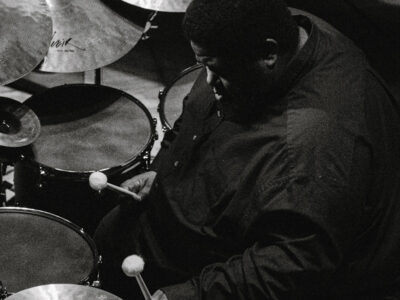
Advertisers are targeting specific audiences as never before, dividing consumers more and more narrowly along income, age, gender, and ethic lines, and splintering society in the process.
By Joseph Turow |Illustration by Christian Northeast
Beginning in the late 1970s, national advertisers and their agencies advanced the notion that Americans were becoming more fractured, frazzled, self-indulgent, and suspicious than ever before. U.S. consumers were getting harder to reach and were sharing fewer common views of the world. These social divisions paralleled an increasing fractionalization of U.S. media, as seen in the growing number of radio stations, magazines, cable networks, VCRs, video games, and computers.
Advertisers believed that these trends presented opportunities to create and sell new products — if they understood the new social realities and if the media targeted the groups that marketers wanted. As a result, both marketing and media executives worked to develop a shared understanding of how America was splitting up and to make sure that changes in media would take place in ways that would help advertisers persuade their chosen segments as efficiently as possible. Advertising and marketing practitioners jockeyed to present their versions of the way men, women, blacks, Hispanic Americans, suburbanites, seniors, and a wide spectrum of other groups were changing. Reaching the right groups with “rifle shot” efficiency became an important part of marketing plans. Media formats that signaled an interest in people with specific backgrounds and lifestyles grew in popularity.
All this meant that the cutting-edge competition was no longer over the creation of mass-circulation media with huge audiences, as it had been in the first three quarters of the 20th century. Rather, it was over the creation of primary media communities — or “image tribes,” in the term coined by marketing consultants Don Peppers and Martha Rogers in their book The One to One Future — that covered a variety of places. The aim for the media firms as well as for the marketers was to make the target audience feel part of a tight-knit extended family, attached to the program hosts, other viewers, and sponsors, wherever they went. Nickelodeon and MTV were pioneer attempts to establish this sort of ad-sponsored communion on cable television. While they started as cable channels, they have become something more. Owned by media giant Viacom, they are lifestyle parades that invite their target audiences (relatively upscale children and young adults, respectively) into a sense of belonging that goes far beyond the coaxial wire into books, magazines, videotapes, and outdoor events that Viacom controls or licenses.
In tandem with these developments, a sea change was taking place in the forms of advertising that marketers used. During the 1980s and 1990s spending on ads in traditional media typically remained level or rose slowly, while the cash channeled into other ways of getting persuasive messages in front of targeted consumers — such as product placement, in-store promotion, discount coupons, and sponsored events — took off.
So did direct marketing. A previously disdained area of the business, it began to look good as direct practitioners’ ability to use databases to pinpoint and customize persuasive messages to individuals and groups grew in sophistication. Advertisers’ interest in direct work suggested that they would naturally grab onto an interest in interactive television and the “mass customization” of news, information, and entertainment.
Despite some grousing from interactive technologists that advertisers were slow to appreciate the potential of their business, by the mid-1990s the largest marketers and their ad agencies were proclaiming that they would move decisively to influence the new interactive world as it developed. Whether the activity was product placement in movies and computer games, subsidization of cable and VCR programming in return for publicity, or payment for links on Internet home pages, marketers viewed the new ad tactics as helping them reach the consumers they wanted in environments conducive to selling. The heads of major technology firms, media corporations, and marketers clearly feel that there is no turning back from the growth of print and electronic choices aimed at narrower and narrower groups of people. The feverish growth of the Internet is ample proof.
Certainly, the high cost of introducing interactive television in the mid-1990s derailed the plans of some companies and caused skeptics to argue that high-tech scenarios wouldn’t ever come to pass. But suggestions about the future based on disappointments of the moment are as misguided as blue-sky futuristic pronouncements. The competition to develop interactive technologies has not faded, despite the changing strategies of particular firms. The momentum toward segmentation is both national and global. Media practitioners are already being rewarded for delivering homogeneous audiences to marketers in clusters of primary media communities. All signs indicate that this will continue to be the case in print and electronic media and that new technologies will speed the process along, especially after the start of the 21st century. The capabilities of print and electronic media will allow virtually all media to adopt two major characteristics of direct marketing that have traditionally made mainstream advertisers jealous. One is selectability — an ability to reach an individual with entertainment, news, information, and advertising based on knowledge of the individual’s background, interests, and habits. The other is accountability to advertisers — an ability to trace the individual’s response to a particular ad.
The major consideration driving these audience-slicing activities is the notion of identity. Marketing and media executives are sure that people gravitate to materials that most closely zero in on their likes and dislikes, their sense of themselves. But marketers also believe the converse: that people prefer not to confront materials that cause them discomfort. Advertisers already avoid associating with controversy if they can help it, since they believe that the displeasure people feel rubs off on them and their products. It stands to reason that when targeting becomes an efficient alternative to sending the same materials to everyone, even more sponsors will hesitate to support touchy topics and perspectives if they go to certain viewers. Research will explore who is angered by what, and media will adjust their formats accordingly.
Popular and expert opinion in the mid-1990s seems permeated with the belief that America is moving through an incredibly centrifugal phase. Books with titles such as The Disuniting of America, American Apartheid, The Next American Nation, and Alien Nation have trumpeted the appearance of increased divisions in U.S. society. News magazines have amplified the books’ influence.
The
consensus seems to be that at every level of society Americans are
separated by their own problems, allegiances, and interests. Many
suggest that the nation’s White Anglo-Saxon Protestant power elite has
given way somewhat to a professional and managerial class containing a
broader mix of races and ethnic backgrounds at the top. Yet the same
analysts note that competition within this multifaceted “overclass” has
itself become intense. This is because of a belief that the U.S. economy
will no longer lift everyone up with it. The sense is that turf battles
have become the norm for individuals within and across income, gender,
age, race, ethnicity, and lifestyles.
Accurate
or not, this widespread talk about social schisms is quite likely to
continue shaping the way that advertisers, their agencies, and media
firms approach Americans in the last years of the 20th century. In view
of the discussions of social conflict and alienation swirling around
marketing and media, executives in that business might protest that it
would be foolish to act differently. After all, they might say, their
mandate is to channel developments of U.S. society into tools for
selling. Ad people, in particular, might note that their campaigns are
more subtle and less inflammatory than those provided by many radio
talk-show hosts, cable television programs, and magazine columns.
In
the face of such protestations, three key points are worth noting. One
is that the advertising industry depends heavily on ideas from other
areas of society. The second is that advertisers are not passive
regarding these ideas. They take action to incorporate them into their
business activities, which often means trying to find ways to exploit
social problems rather than to ameliorate them. The third is that the ad
industry affects not just the content of its own campaigns but the very
structure and content of the rest of the media system. The advertising
industry’s cash and philosophy provide the principal supports for those
explicitly divisive talk shows, cable programs, and magazine columns.
Whether ad people like it or not, they are centrally responsible for
images of social division.
A
parallel example of the way that perceptions of social division are
being built into structures that guide people’s lives can be seen in the
design of communities during the 1980s and 1990s. In areas throughout
the United States, home builders have been attracting buyers by creating
communities that have gates and guards around them. The architecture
critic of the Dallas Morning News estimated in 1994 that four
million Americans were already living in gated communities. The number
was growing quickly. That year, between one-third and two-thirds of all
new housing construction in southern California were gated. The
percentage was said to be about one-third in Phoenix, the suburbs of
Washington, D.C., and in many parts of Florida. Typical features of
upscale gated communities were tight security (walls, electronic tag
access), exclusivity (homes in the $450,000 to $1.2 million range), and
income and lifestyle segregation (what the Morning News called “social homogeneity”).
Observers
agreed that the force driving these communities was fear of crime and
its erosion of property values. Tied to that was a skepticism of
government’s ability to do much about either. In fact, gates and
guardhouses were popping up in urban neighborhoods as well as suburban
ones, and they were cutting across traditional racial and economic
lines. The Morning News reported that Dearborn Park, a popular
middle-class neighborhood near downtown Chicago’s Loop, installed gates
and cul-de-sacs. In Los Angeles, several public housing projects erected
gates and walls.
One
planning expert asserted that the gating of communities indicated a
fundamental shift in American life that was related to “a dramatic lack
of trust in public order.” It wasn’t that there was necessarily more
crime, added a sociologist, “but that it has become so random… It used
to be that if you stayed out of bad neighborhoods you’d be OK. That no
longer works.” The effects of the fear had even spread to suburban mall
shopping. “In the past . . . most malls didn’t want visible security,” a
security consultant told a Washington Post reporter. “Now more and more of them want it, because the public wants it. They want to see armed guards.”
In
that environment, the builders of such communities saw reason to market
their developments as “safer, friendlier and more economically stable
than traditional urban or suburban neighborhoods.” One called its
development “a perfect place to live … outside the pandemonium of the
city,” where there can be “a return to simpler times, when you knew you
were secure within the boundaries of your own neighborhood … [and]
where children could play unattended and be safe after dark.”
Critics
of gating didn’t quarrel with the desire to protect home and family.
They did, however, point out that while gating might be useful for the
individual, it was divisive for society. That was because communities
with gates separated not just the violent and the nonviolent, they put
walls between people of different incomes, races, ethnicities, and even
ages. Once gates and guardhouses were built, they tended to reinforce
the values that created them. Such structures, literally built into the
society, would be very difficult to change.
“[Wanting
to be safe and hold good property values] are perfectly good motives,
right and honorable,” said Rice University sociologist Stephen
Kleinberg. “[But t]he problem with enclaving is that it leads to the
deterioration of any sense of connectiveness to the larger community.
‘If I’m making it, it’s not my responsibility to look after others.’
That’s the direction American society seems to be going, and it’s
ominous.” University of Pennsylvania sociologist Douglas Massey added a
pragmatic warning about the effects of this separation: “A nation so
subdivided at home, so miseducated, can’t compete in the global economy
… If you build up a wall you inevitably pay other prices.”
The same conclusion could be drawn about the emerging media world. The wide diversity of media channels, the fascination of the Internet, the excitement of interactivity through cable systems, phone systems, or even satellites are hard to deny, or to want to relinquish. Many people who have moaned over the small number of choices on TV, aimed at the lowest common denominator, may delight at the prospect of a television system that is like the magazine industry. One person can get The New Yorker or Vanity Fair or The National Enquirer or Field and Stream — or all of these.
But what cheers the individual may hold problems for the collectivity.
Many of the key players shaping the wonders of the new media world have a
vested interest in emphasizing differences between people. The social
price may be alienation, reduced social mobility, anger, and fear of
others.
As it often has been with gating, income is a central issue in contemporary media trends. Ad practitioners construct income in terms of winners and losers. People with relatively low incomes are typically the big losers, since marketers and media executives show little interest in attracting them to specialized areas. By contrast, upscale
individuals
and families have marketers falling over each other to reach them. They
differentiate income further by lifestyle. The more a company can
connect someone to a set of high-consumption lifestyles, the more chance
that the person will be tracked and wooed across a variety of targeted
and personalized media. Wealth follows wealth.
Measured
against the problems of getting food and a roof over one’s head,
marketers’ separation of people into income classes may not seem like a
problem. Yet the cultural experiences of different income groups are
likely to become increasingly divergent. That will happen because people
of different income groups will be segregated by different news,
entertainment, and information options, sorted by disposable income.
People will be attracted to different options in these three areas,
according to financial wherewithal. And it will happen because in the
name of efficient targeting, marketers and media firms encourage people
of different incomes toward certain formats and not others. Mutually
reinforcing, these activities taken together will lead some groups more
than others to have better and larger windows on the culture of success.
But
income is only the tip of a broad gamut of prejudices that marketers
and media act out. They link income to notions about such categories as
age, education, gender, race, and ethnicity. Personality and life style
labels are also put into play with the aim of uncovering individuals who
are both predictable media users and useful customers.
Some
advertisers’ actions in the name of selling actually opened doors for
previously marginalized groups. Consultants, advertisers, and agency
executives used the idea of “disposable income” to justify pursuing
certain emerging identities in society. Along with rethinking their
understanding of the wealthy, the upscale, women, suburbanites, and
other clearly desirable groups, ad people rewrote their books on
homosexuals; African, Hispanic, and Asian Americans; and seniors.
Marketers established that many members of these groups ought to be
targeted for their buying abilities.
The down side of this labeling process, though, was that some people who may have considered themselves part of those groupsof gays or blacks or seniorsdid
not make it into the market-driven categorizations. The resulting
targeting and tailoring might well distance upscale blacks from
downscale ones, lesbians (especially those with children) from male
homosexuals, executive women from others, seniors over seventy years old
from younger ones.
The
many other demographic and lifestyle labels that marketers acted out
during the 1980s and 1990s extended the portrait of America as
splintered by distinctions. Doing that, they signaled that people should
find their own kind in media communities designed for them. They also
signaled the irrelevance of many geographic relationships. In an era of
satellites, physical distance is becoming less and less a concern for
media companies. Huge media firms interested in target marketing
increasingly find it far more useful
to distribute materials for far-flung consumers with similar tastes than
to produce entertainment, news, or information for audiences of
relatively narrow geographical areas who have little in common.
These far-flung groups of people may be more like one another in their backgrounds and lifestyles than the people who live in neighborhoods two miles away. People may increasingly feel that links to individuals in their immediate space and timepeople they work with, see in stores or on the streetsare not nearly as important as their far-flung virtual communities. News about their own neighborhoods will probably draw people who care about schools and property values. Beyond those tangibly important concerns, though, they may care to learn little about people who live close to themin the same or nearby neighborhoodsbut whom they consider substantially different. Links between suburbs and cities, already tenuous, will likely become even more so.
Given the chance to separate themselves electronically from types of people they believe are threatening their well-being, media users are likely to do so. Keeping “different” people out of mind when they don’t have to deal with them may become as important as keeping them out with gates. Those who can afford it will deal with the fear of going out by dialing into malls set up for individuals like them. Media firms will customize e-mail, interactive games, and on-line chat rooms to create virtual communities of people from around the world who hold similar interests, and attract similar advertisers.
It
will take time, perhaps decades, for the full effects of the emerging
media world to take shape. Eventually, it is likely that children
growing up in the hyper-segmented environment will see the pictures of
division as reflecting the real thing. Compared even to today, the media
of the future will be far more fragmented, with hundreds of
market-driven options targeted and tailored to carefully calibrated
types. While that may engender a tight sense of community among people
who share similar backgrounds, it could also reinforce suspicion, lack
of empathy, and alienation between people of different backgrounds,
income classes, and lifestyles. Primary media communities — image
tribes — will guide consumers’ sense of social separation by helping
them understand whom to label as not like them.
In
that kind of environment, it is easy to imagine critics worrying that
the absence of strong collective media poses a threat to democracy.
Society-wide argumentation will be harder and harder to sustain. People
who fundamentally disagree may simply not argue with one another; key
political and social issues may not be thrashed out as well as they
should. With people so accustomed to their own image tribes, they may be
unwilling to connect in debates with people outside their circles. And
advertisers, traditionally wary of controversy, certainly won’t
encourage it.
The
proper response to this hyper-segmentation of America is not to urge a
return to the mass-market world of the 1960s and 1970s. Even if it were
possible, it would not be desirable. The explosion of media during the
past few decades has led marketers to address many parts of the U.S.
population that previously lacked audiovisual identities. Ethnic groups,
racial groups, gender groups, and groups arrayed around political
positions have seen versions of entertainment and news aimed at them.
This sort of cultural diversity ought to be celebrated as the font of a
strong, idea-rich society.
But
to do that it ought to be shared among the population as a whole. The
major problem with the emerging media world is its impulse to keep
diversity hidden. Signaling, tailoring, and other targeting activities
encourage people to join their own image tribes apart from other image
tribes. As a result, marketers’ concerns with diversity act to push
groups away from one another rather than to encourage them to learn
about the strengths of coming together to share experiences and discuss
issues from different viewpoints.
Another
problem with this approach to diversity is that advertisers have by and
large been the ones defining it. In fact, one of the enduring problems
of the U.S. media system is that advertisers have had a monopoly on
descriptions of America. However, there are — or should be — many
other ways to characterize populations. One can do it from political,
sociological, historical, religious, and literary standpoints. A
television program can be geared toward “those who went to Catholic
schools” or “those whose parents migrated to the U.S. from Eastern
Europe” or “those who somehow feel part of the Old South.” These labels
describe a lot of people. They are undoubtedly connected to a gamut of
“lifestyles” and actions in one way or another. But they are not
categories that advertisers use because it isn’t clear that they relate
in any predictable way to the purchase of products. Should the ability
to share the consumer experience be the one characteristic linking us
together?
Individuals
who are intent that the answer should be no may be able to push against
the tide by going out of their way to use media not intended for them
and by making it difficult for advertisers to label them. Unfortunately,
though, the strength of current trends do not make one optimistic that
the growing momentum toward a divided media world will be reversed.
Advertisers have been major forces guiding the formats of this new
world, and they will resist derailing it. One reason is that companies
believe that the American population is in tune with their sense of
division. Another is that they suspect that once selling takes off on
the Internet, interactive TV, and other futuristic channels, it will be
quite profitable.
Once the emerging system is solidified, it will not be easy to change. Media technologies and formats that have been shaped by the values of social division will reinforce those values even when leaders in their rhetoric are trying to bring people together. Like heavy gates separating one community from another, the very structure of the American media world will drive people apart for a long time to come.
This article is excerpted from Breaking Up America: Advertisers and the New Media World, by Dr. Joseph Turow, C’72, ASC’73, Gr’76, professor at the Annenberg School for Communication, published in May by the University of Chicago Press.




